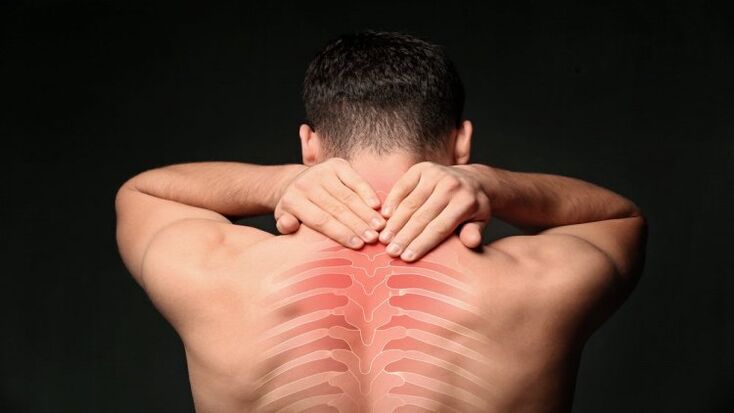Osteochondrosis is a chronically occurring pathological process in which the vertebrae and the intervertebral discs between them undergo degenerative-dystrophic lesions. This disease most often affects the cervical and lumbar spine. The thoracic spine is much less commonly affected, however, this pathology presents some difficulties for differential diagnosis as it can be confused with heart, lung, or any other disease. In this article, we examine the symptoms and treatment of chest osteochondrosis.
Clinical picture of chest osteochondrosis

The leading clinical symptom of degenerative-dystrophic lesions of the thoracic spine is pain syndrome between the shoulder blades, in the chest, along the ribs, and so on.
Some patients report moderate pain, while others report extremely severe pain. Pain syndrome is aggravated by taking a deep breath, turning or tilting the torso, raising the arms, and other types of physical activity. Because of the localization of pain, osteochondrosis can be confused with angina pectoris, myocardial infarction, inflammation of the pancreas, and some other diseases. Thorough differential diagnosis is extremely important.
Due to the severe pain, the patient is unable to take a deep breath, causing him to feel short of breath. In parallel, sensitive disorders of the upper extremities are often seen in the form of numbness, tingling, and many more, muscle tension in the back. In some cases, the clinical picture is complemented by gastrointestinal disorders such as bloating, epigastric pain, heartburn, and so on.
Treatment of osteochondrosis of the thoracic spine
First of all, during the period of worsening osteochondrosis of the thoracic spine, it is recommended to keep the bed or at least half of the bed rest.
Non-steroidal anti-inflammatory drugs (NSAIDs) are used to relieve pain.
In 2014, scientists from the Kazakh National Medical University published a study that found the effectiveness of a complex treatment for osteochondrosis using muscle relaxants.
As for muscle relaxants, they are designed to stop muscle cramps.
The treatment plan is necessarily supplemented with B vitamins and physiotherapy procedures. Among the physiotherapy methods, electrophoresis, magnetotherapy, phonophoresis, etc.
After stopping the acute process, the patient can prescribe massage and therapeutic exercises.
In some cases, the issue of surgery may be resolved, such as in the presence of an intervertebral hernia that compresses the spinal cord.























